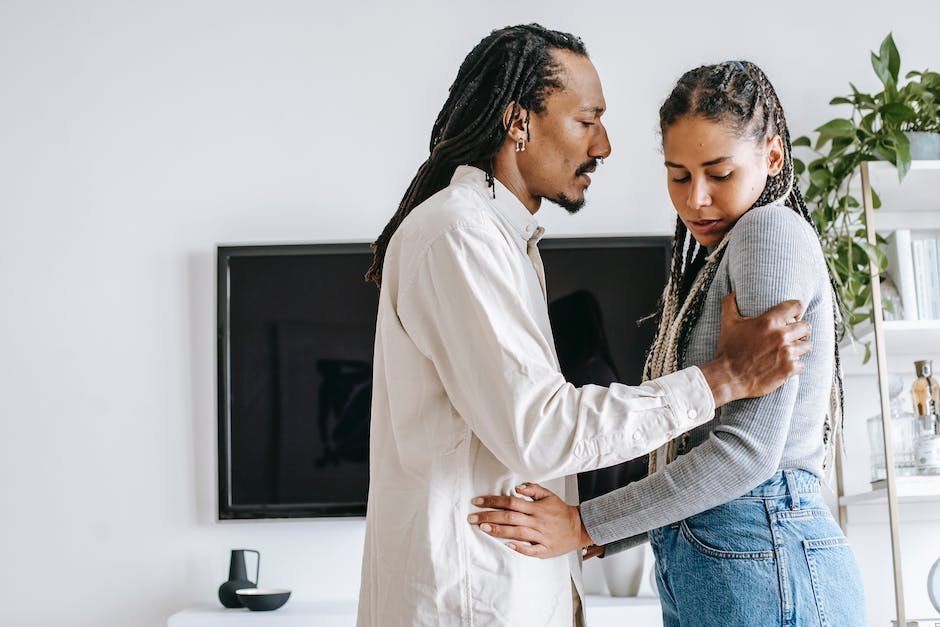Puppies, those bundles of joy and endless curiosity, have captured the hearts of millions with their floppy ears, wagging tails, and adorable antics. Yet, amidst all the cuteness lies the reality of puppy parenting – a delightful but challenging journey. From the notorious shoe chewer to the incessant howler, it is not uncommon for puppies to exhibit a range of behavioral issues that can leave even the most patient owners exasperated. But fear not, for this article aims to explore some of the most frequent puppy misbehaviors and provide invaluable insights on how to tackle them successfully. So, if you’re ready to navigate the maze of puppyhood and unravel the secrets to corralling those quirky behaviors, then let us embark on this adventure together!
Table of Contents
- Understanding Puppy Behavior: Unraveling the Whys and Hows
- Creating a Structured Environment: A Key to Managing Behavioral Issues
- Addressing Biting and Mouthing: Redirecting and Teaching Bite Inhibition
- Curbing Separation Anxiety: Tips for Helping Your Puppy Feel Secure
- Housetraining Woes: Practical Techniques for Successful Potty Training
- Q&A
- Wrapping Up

Understanding Puppy Behavior: Unraveling the Whys and Hows
Exploring the intricate web of a puppy’s behavior can be both fascinating and puzzling. Why do they chew on everything in sight, and how can you redirect this behavior? Why do they suddenly become timid or aggressive, and what can you do to nurture their confidence? Understanding puppy behavior is essential for creating a harmonious bond between you and your furry friend. Here are some insights to help unravel the whys and hows of your pup’s actions:
- Chewing: Puppies explore the world with their mouths, much like human infants. Chewing is their way of investigating objects and relieving teething discomfort. To redirect this behavior, provide them with appropriate chew toys and consistently encourage their use.
- Fear or Aggression: Puppies may exhibit fear or aggression due to lack of socialization or past negative experiences. Patiently expose them to new people, places, and experiences, using positive reinforcement to build their confidence.
- Potty Training: Accidents are common during the early stages of potty training as puppies learn to control their bladder and bowels. Consistency and patience are key in establishing a routine and reinforcing desired behavior.
Remember that each puppy is unique in their behavior and progress. By taking the time to understand the underlying reasons behind their actions, you can provide the necessary guidance and training to raise a well-rounded and happy canine companion.

Creating a Structured Environment: A Key to Managing Behavioral Issues
In today’s fast-paced world, managing behavioral issues can be a daunting task for educators, parents, and guardians alike. However, creating a structured environment can be the key to effectively managing these challenges and promoting positive behavior. By establishing clear expectations, routines, and systems, individuals can thrive in an environment that promotes understanding, consistency, and growth.
A structured environment provides a solid foundation for individuals with behavioral issues to develop self-control, responsibility, and accountability. Here are some essential tips to create a structured environment that fosters a positive behavioral change:
- Establish Clear Expectations: Clearly articulate the behavioral expectations to all individuals involved. This clarity helps everyone understand the boundaries and standards they are expected to follow, minimizing confusion and frustration.
- Implement Consistent Routines: Consistency is essential in maintaining a structured environment. By implementing daily routines that include specific times for activities such as meals, study, and recreation, individuals can feel a sense of security and predictability.
- Provide Clear Systems and Support: Individuals may need guidance on how to navigate through various situations. By establishing clear systems, such as a behavior chart or a reward system, individuals can understand the consequences of their actions and receive necessary support when needed.
Creating a structured environment is a powerful tool in managing behavioral issues. With consistent adherence to expectations and routines, individuals can cultivate positive behavior while feeling safe and supported. By fostering this environment, we can empower individuals to overcome challenges and grow into their full potential.

Addressing Biting and Mouthing: Redirecting and Teaching Bite Inhibition
Biting and mouthing are natural behaviors for puppies and young dogs as they explore the world and learn about their surroundings. However, it is important to redirect these behaviors and teach bite inhibition to prevent any harm or discomfort to humans or other animals. By implementing the following strategies, you can effectively address biting and mouthing in your canine companion:
1. **Redirect with toys**: When you notice your pup is biting or mouthing, immediately redirect their attention to a suitable toy or chew. This helps them understand what is appropriate to chew on, while also providing mental and physical stimulation.
2. **Positive reinforcement**: Reward your dog for exhibiting appropriate bite inhibition by offering praise, treats, or even a short play session. This encourages them to continue practicing gentle mouthing and discourages excessive force during play.
3. **Taste deterrents**: For dogs that persistently bite or mouth, you can apply a bitter-tasting spray or deterrent to objects they often target. This unpleasant taste will discourage them from biting or mouthing in the future.
4. **Socialization and playdates**: By exposing your dog to other dogs and puppies, they can learn appropriate bite inhibition through interactions and play. Engaging in supervised socialization opportunities helps them understand the limits of acceptable behavior.
Remember, teaching bite inhibition requires patience and consistency. With time, your dog will learn to control their bite pressure and understand what is considered acceptable behavior during play and interactions.
Curbing Separation Anxiety: Tips for Helping Your Puppy Feel Secure
Helpful Tips to Make Your Puppy Feel Secure
Welcoming a new puppy into your home is an exciting time, but it’s common for them to experience separation anxiety. The good news is that there are several things you can do to help your furry friend feel more secure and confident when you’re not around. Here are some tips to curb separation anxiety:
- Create a safe space: Establish a designated area in your home where your puppy can retreat to when they feel overwhelmed or anxious. Fill it with comfortable bedding, toys, and objects that carry your scent to provide a sense of familiarity.
- Practice short departures: Gradually acclimate your puppy to your departures by starting with brief absences and gradually lengthening the time apart. This will help them understand that you will always return and build their confidence in being alone.
- Leave engaging distractions: Provide your pup with interactive toys or treat puzzles to keep them occupied and mentally stimulated. This will help shift their focus from your absence and provide a positive association with being alone.
- Establish a routine: Dogs thrive on consistency, so establish a daily routine of feeding, exercise, and playtime. A predictable schedule will give your puppy a sense of structure and security, reducing their anxiety when you’re not there.
- Don’t make a big fuss: While it may be tempting to make a big production out of leaving or returning home, it’s best to keep arrivals and departures low-key. This will help normalize your comings and goings, preventing your puppy from getting overly worked up.
- Consider professional help: If your puppy’s separation anxiety persists and significantly affects their well-being, consulting a professional dog trainer or animal behaviorist can provide valuable guidance and techniques to address the issue.
Remember, patience and consistency are key when helping your puppy overcome separation anxiety. By following these tips and providing a secure and loving environment, you’ll set your furry friend on the path to feeling more confident when you’re not by their side.
Housetraining Woes: Practical Techniques for Successful Potty Training
Embarking on the journey of potty training your furry friend can be quite the challenge. However, with a little dedication and the right techniques, you can conquer those housetraining woes and set your pup on the path to success.
The Right Schedule
Establishing a consistent schedule is vital when it comes to successful potty training. Develop a routine that includes regular feeding times, walks, and bathroom breaks. Ensure that your pup gets enough exercise and opportunities to relieve themselves throughout the day.
Positive Reinforcement
One of the most powerful tools in your potty training arsenal is positive reinforcement. Praise and reward your four-legged companion when they exhibit the desired behavior of going potty outside. Use treats, toys, or verbal cues to let them know they are doing well. Be patient and consistent with your rewards, as it helps your pup understand the behavior you expect from them.
Accidents Happen
While accidents are bound to occur during the housetraining process, it’s important to stay calm and avoid punishment. Punishing your pup for accidents can create fear and anxiety around potty training, making the process more challenging. Instead, focus on managing the situations and preventing accidents by closely monitoring your dog’s behavior, especially during times when they are more likely to need to go.
Q&A
Why does my puppy chew everything in sight?
Puppies explore the world with their mouths, so chewing is a natural behavior. Provide appropriate chew toys and redirect your puppy’s attention whenever they start chewing on inappropriate items.
How can I stop my puppy from biting?
Puppies bite while teething or during play; it’s their way of exploring boundaries. Encourage gentle play with chew toys and provide appropriate outlets for their energy, such as daily exercise and interactive games.
How do I prevent my puppy from jumping on people?
Teach your puppy basic obedience commands, like “sit” or “down,” and reward them when they greet people calmly. Consistently reinforce this behavior and discourage jumping by turning away or withholding attention when your puppy attempts to jump.
Why is my puppy constantly barking?
Puppies often bark when they’re bored, afraid, or seeking attention. Ensure they receive plenty of mental and physical stimulation throughout the day. Teach them a “quiet” command using positive reinforcement and redirect their attention to more appropriate activities.
How can I potty train my puppy effectively?
Establish a routine with regular bathroom breaks, and take your puppy to the designated potty area after meals, playtime, or naps. Reward them for eliminating in the correct spot and be patient, as accidents may happen during the training process.
My puppy is afraid of people and other dogs. What can I do?
Expose your puppy to positive experiences with people and other dogs gradually, using controlled introductions and positive reinforcement. Provide a safe and calm environment where they can gradually build trust and confidence at their own pace.
How do I deal with my puppy’s separation anxiety?
To alleviate separation anxiety, gradually accustom your puppy to being alone by leaving them for short periods and gradually extending the time. Create a comfortable space, provide toys or treats, and consider using calming aids like thundershirts or pheromone diffusers.
My puppy is constantly digging up my yard. How do I stop this behavior?
Digging can be a sign of boredom or excess energy. Provide your puppy with mental and physical stimulation along with designated digging areas where they can safely indulge their natural instincts.
How can I prevent my puppy from begging at the dinner table?
Teach your puppy boundaries by consistently ignoring begging behavior and rewarding them for remaining calm during mealtime. Make sure they have their own designated eating area and coordinate their mealtime with yours to avoid tempting them with human food.
What should I do when my puppy exhibits fear or aggression?
Consult a professional dog trainer or behaviorist to address fear or aggression issues. They will assess the underlying causes and develop a behavior modification plan tailored to your puppy’s specific needs.
Wrapping Up
In conclusion, raising a puppy can be an incredibly rewarding experience, but it does come with its fair share of challenges. From potty accidents on the carpet to those infamous chewed-up shoes, it’s no secret that our delightful furry friends occasionally test our patience. However, with a little understanding, patience, and the right approach, tackling common puppy behavioral issues can become a breeze.
Remember, your puppy is just trying to navigate their way through this strange new world, and it’s our duty to guide them gently towards becoming a well-behaved adult dog. By identifying the root causes behind these common behavior problems, such as teething, separation anxiety, and fearfulness, we can address them effectively and ensure a harmonious household.
Patience is key during this stage, as consistency and positive reinforcement will go a long way in shaping your puppy’s behavior. Taking the time to socialize them properly, introduce them to different environments, and provide mental stimulation will help prevent future frustrations.
Additionally, seeking professional guidance or enrolling in obedience classes can offer valuable insights and techniques to tackle specific behavioral issues. Remember, no puppy is perfect, and even the most experienced dog owners face challenges along the way. What matters is your dedication to their well-being and your willingness to work through any obstacles that may arise.
So, don’t despair when encountering those common puppy pitfalls. Instead, embrace this journey as an opportunity to build a lifelong bond with your furry companion. With a bit of perseverance and a whole lot of love, you’ll be amazed at how quickly your puppy’s troublesome habits transform into endearing quirks that make your relationship truly special.
In the end, the joy and unconditional love you receive in return for your efforts far outweigh any temporary setbacks. So, continue to tackle those common puppy behavioral issues head-on, and before you know it, you’ll be proud to have raised a happy, well-adjusted doggo who brings endless joy to your life.
As an affiliate, my content may feature links to products I personally use and recommend. By taking action, like subscribing or making a purchase, you’ll be supporting my work and fueling my taco cravings at the same time. Win-win, right?
Want to read more? Check out our Affiliate Disclosure page.